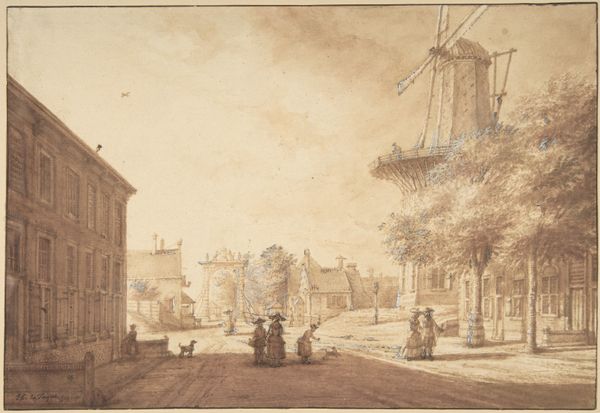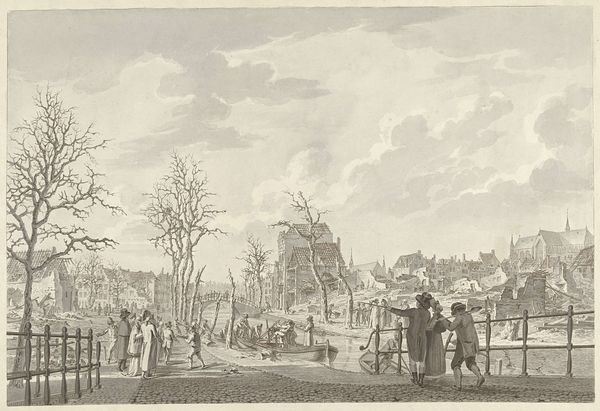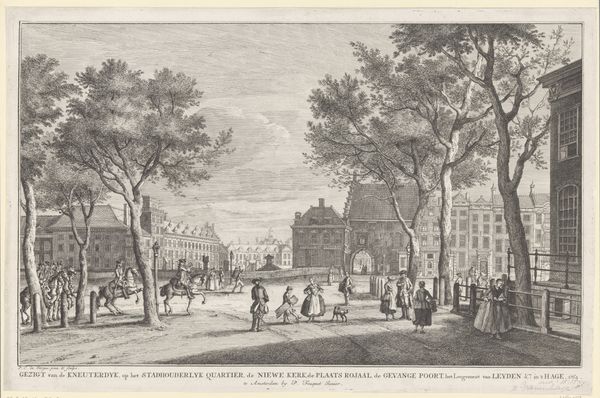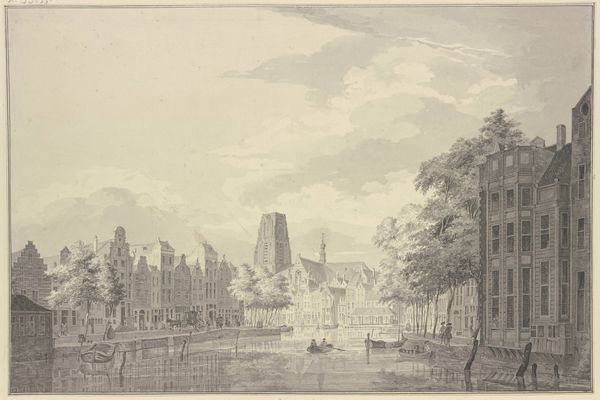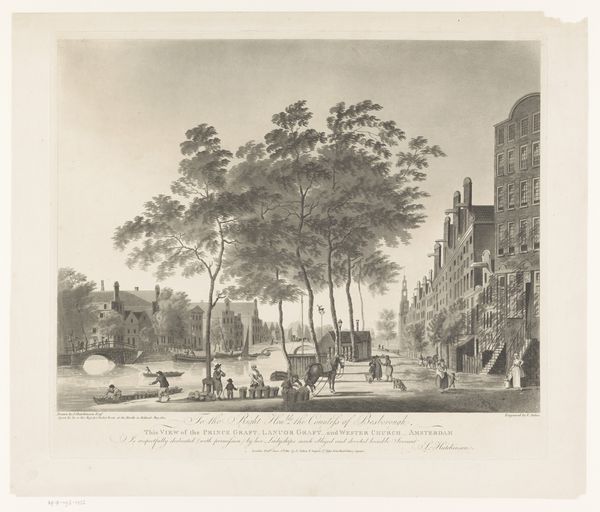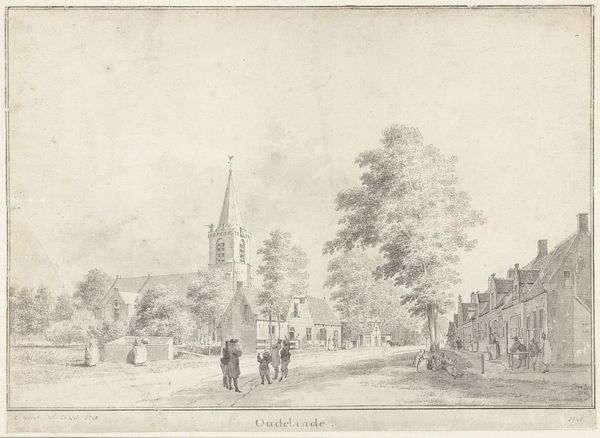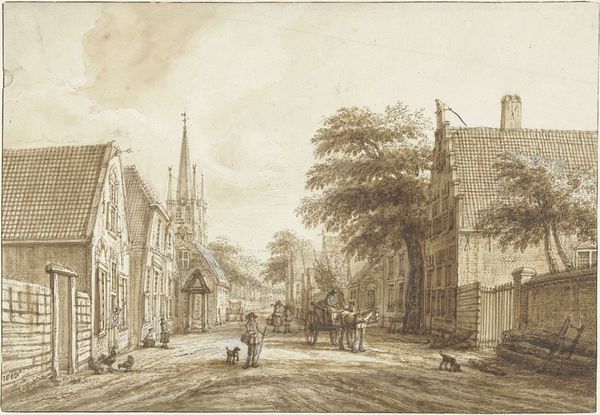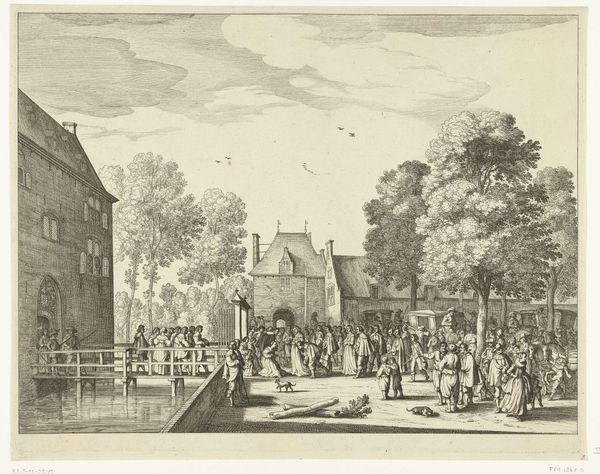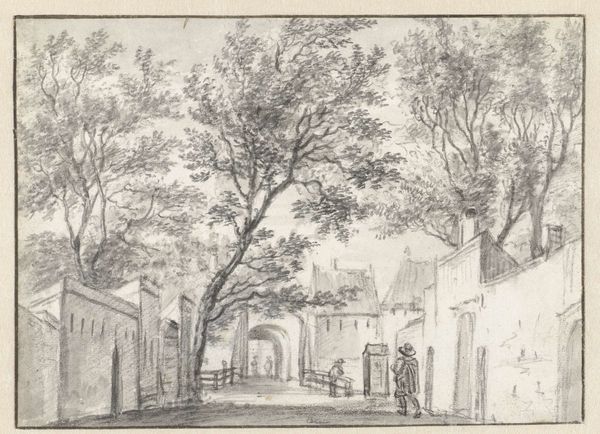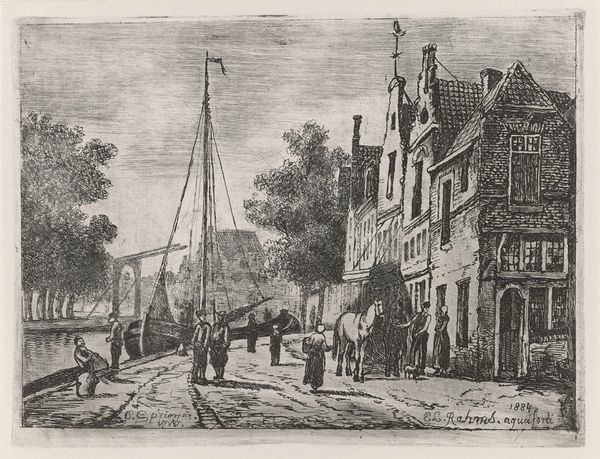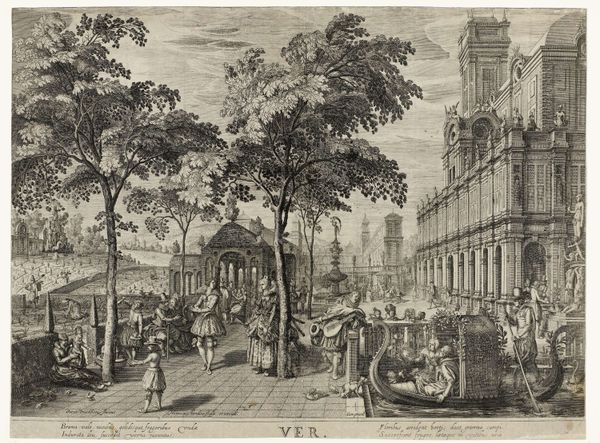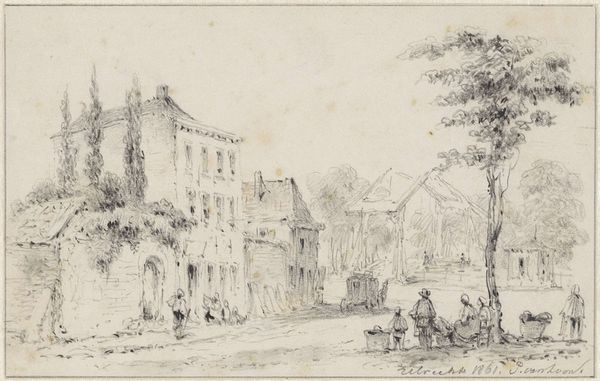
Straßenansicht bei einem Stadttor, rechts eine Windmühle
0:00
0:00
drawing, paper, ink, indian-ink
#
architectural sketch
#
landscape illustration sketch
#
drawing
#
netherlandish
#
light pencil work
#
pencil sketch
#
paper
#
personal sketchbook
#
ink
#
indian-ink
#
pen-ink sketch
#
15_18th-century
#
watercolour illustration
#
fantasy sketch
#
watercolor
#
environment sketch
Copyright: Public Domain
Curator: This drawing, "Straßenansicht bei einem Stadttor, rechts eine Windmühle," or "Street View at a City Gate, with a Windmill on the Right," is attributed to Paulus Constantijn la Fargue. It’s an Indian ink and watercolor work on paper, a delicate landscape. What strikes you initially about it? Editor: It has a serene, almost melancholic atmosphere. The limited palette emphasizes the intricate details, like the figures clustered near the building and that imposing windmill in the distance. The composition feels both intimate and expansive. Curator: I agree. Consider how windmills at the time had such a big significance – they represented not only economic but also technological advancement, integral to the Dutch Golden Age and its power structures, of which some communities are often left out. How might la Fargue’s depiction engage with those existing inequalities? Editor: Fascinating point. The windmill dominates the composition, definitely. This prominence might suggest the importance of industry and progress, but the soft rendering—especially in contrast to the city gate that also anchors the composition– hints at a more nuanced story, even melancholy perhaps. Notice, too, the groups of figures—their clothes, postures. What do these people suggest about daily life here? Curator: They present what could have been either working-class figures going about their labor or bourgeois families on an outing. I notice those carrying heavy burdens near the entrance; the composition emphasizes the way gender and labor are performed under the authority of these large structures of power. The windmill's symbolism as a marker of capitalist production and progress in the background contrasts with these intimate portraits. Editor: And in what ways do you think the presence of that windmill, and that gate in the back also shapes collective memory in places like these? It is interesting to imagine how structures and sites might tell these broader truths, shaping not only class relations but individual memories and interactions. Curator: That brings us back to the tension between individual experience and larger historical forces. It emphasizes how the mundane acts of ordinary people and groups may take place and take center stage beneath powerful sites and structures. Editor: Exactly. I leave this artwork contemplating the rich and often complex connections between visual and societal cues, with emphasis on this unique contrast! Curator: Precisely! La Fargue presents us with a reminder to view art not just as pretty scenery, but also with an active, critical interpretation in mind, acknowledging the diversity of labor and social stratification in art history and memory.
Comments
No comments
Be the first to comment and join the conversation on the ultimate creative platform.
